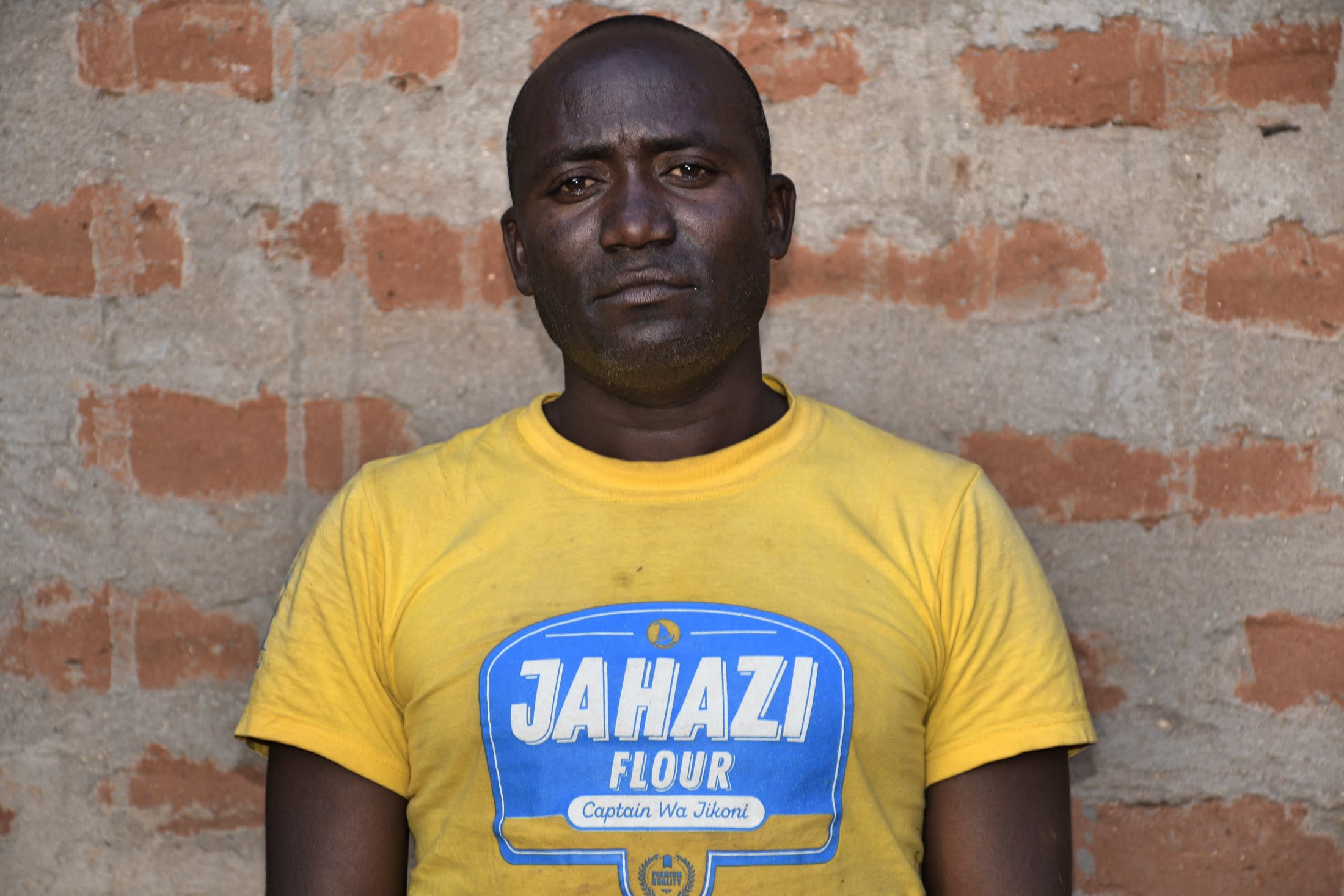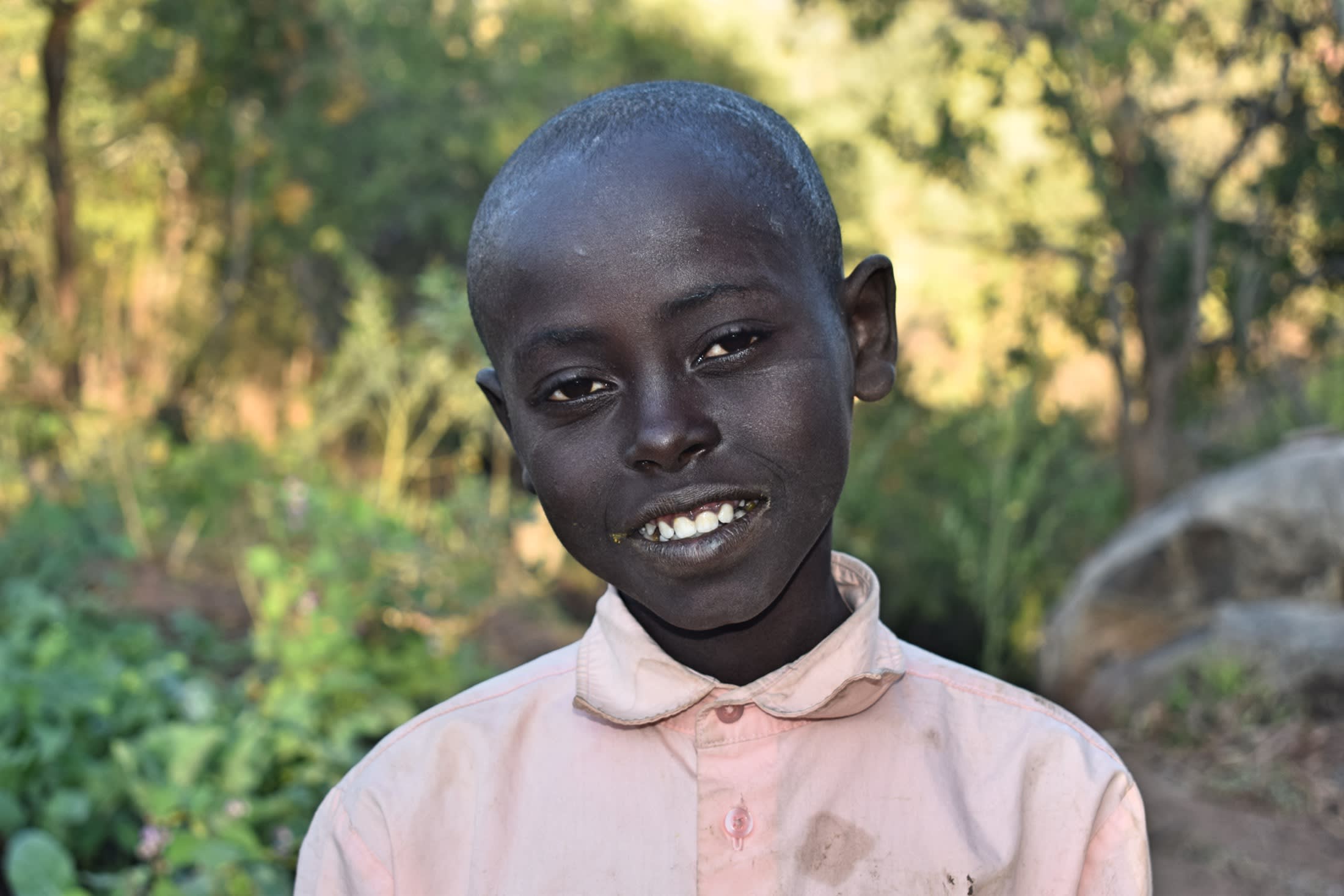Those who live farthest from the water source in Kithalani have a history of failed crops - they just can't gather enough water throughout the day to serve all their household needs and irrigate their crops as well.
Unfortunately, this makes perfect sense since those on the extreme edges of the community face at least a two-hour journey each time they go to fill their jerrycans. Not only do they have less to feed their families and less income, but they must also purchase supplementary food from their neighbors or nearby markets. For this community of 800, comprised mostly of subsistence farmers, this is a heavy blow. And that's not all that plagues the people who were not blessed to live close to any of the sand dam and shallow well constructions in this region.
"Fetching water from the current water points is difficult and tiring because it is located far away from my home," said 43-year-old farmer William Musyoka (shown below). "I have recently been asked by [my] doctor to avoid too much work; however, I still have to walk to the water point to fetch water for drinking, cooking, and irrigating my crops. I often reap low yields. For instance, most of my vegetables have dried up due to lack of water."

Because William is a member of a Self-Help Group that we've worked with before, he knows that households need proper hygiene and sanitation facilities and habits to prevent illness. But unfortunately, he just hasn't been able to apply the measures he knows would help his family.
"Improving hygiene and sanitation has been difficult because we have to use water sparingly," William explained. "I cannot even remember the last time I cleaned my house using water."
And adults aren't the only ones affected by the water crisis. Kids who live on the outskirts of Kithalani miss school often because the journey to the water source takes too long, and they are not allowed to attend school without carrying a container of water with them.

"I do not get enough time to play or study because I have to help my family in fetching the water," said eight-year-old Peter M (shown above). "Walking several kilometers to the water point is straining, which leaves [me] less energy to focus on studies. For instance, I have just come from school, and I am helping my father fetch water to irrigate his vegetables. I will also have to fetch water to carry to school tomorrow."
Removing the long trips to the water source will give the community members of Kithalani hours per day. It will allow them to keep some of their energy in reserve for important things like farming, studying, and playing.
Note: Our proposed water point can only serve 300 people per day. We are working with the community to identify other water solutions that will ensure all 800 people in the community have access to safe and reliable drinking water.
What We Can Do:
Our main entry point into this community has been the Self-Help Group, which comprises households working together to address water and food scarcity in their region. These members will be our hands and feet in constructing water projects and spreading the message of good hygiene and sanitation to everyone.
Hand-Dug Well
This particular hand-dug well will be built adjacent to a sand dam project, which will supply clean drinking water once it rains. We have provided the group with the tools needed for excavation. With the guidance of our artisans and mechanics, the excavated well will be cased, sealed with a well pad, and then finished with a new AfriDev pump.
Excavation takes a month or more on average, depending on the nature of the rock beneath. Construction of the well lining and installation of the pump takes 12 days maximum. The well will be lined with a concrete wall including perforations so that once it rains, water will filter in from the sand dam.
This well will bring clean water closer to families.
New Knowledge
These community members currently do their best to practice good hygiene and sanitation, but their severe lack of water has significantly hindered reaching their fullest potential.
We will hold hygiene and sanitation training sessions with the Self-Help Group and other community members to teach essential hygiene practices and daily habits to establish at the personal, household, and community levels. This training will help to ensure that participants have the knowledge they need to make the most out of their new water point as soon as the water is flowing.
One of the most important topics we plan to cover is handling, storage, and water treatment. Having a clean water source will be extremely helpful, but it is useless if water gets contaminated when it is consumed. We will also emphasize the importance of handwashing.
The community and we firmly believe that all of these components will work together to improve living standards here, which will help to unlock the potential for these community members to live better, healthier lives.
We typically work with self-help groups for 3 to 5 years on multiple water projects. We will conduct follow-up visits and refresher training during this period and remain in contact with the group after all of the projects are completed to support their efforts to improve sanitation and hygiene.

 Protected Dug Well
Protected Dug Well
 Rehabilitation Project
Rehabilitation Project

























